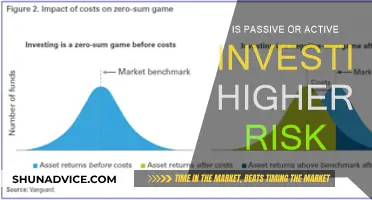
Hedging is a risk management strategy used by investors to protect their portfolios from adverse price movements and reduce the impact of short-term corrections in asset prices. It involves using financial instruments or market strategies to offset potential losses in investments. While hedging can provide portfolio protection, it typically comes at a cost, reducing potential profits. This cost is often referred to as the premium, and it is the price one pays for the protection that hedging provides.
There are several common hedging strategies, including short selling, buying put options, selling futures contracts, and using inverse ETFs. These strategies can be complex and may not be suitable for all investors due to their potential costs and drawbacks. However, understanding how hedging works is essential for investors to make informed decisions about protecting their portfolios.
| Characteristics | Values |
|---|---|
| Purpose | To reduce the impact of short-term corrections in asset prices |
| Risk Management | To offset losses in investments by taking an opposite position in a related asset |
| Cost | The premium or cost of the hedge |
| Effectiveness | Depends on the value of the hedged portfolio in the face of dropping asset prices |
| Time Period | Hedges are usually implemented for a specific time period |
| Hedges | Short selling, buying put options, selling futures contracts, using inverse ETFs, cash, short selling indices, pair trades, selling 'in-the-money' calls |
What You'll Learn

Short selling
- Open a margin account: Before engaging in short selling, traders open a margin account with a broker so they can borrow shares. Margin accounts require minimum balances, called the maintenance margin, to cover potential losses. The broker charges interest on the borrowed shares while short positions remain open.
- Identify a stock to short: Traders identify stocks that they believe will decline in value by analyzing financial reports, industry trends, technical indicators, or broad market sentiment. This involves speculation based on the expectation that the stock's price will drop, allowing the trader to profit by buying it back later at a lower price.
- Locate borrowable shares: Before the trader can short-sell, the broker must locate shares that can be borrowed. Brokerage firms now handle this process automatically, finding shares from other clients' accounts or even institutional lenders.
- Place the short sale order: The shares will likely be available on the brokerage platform, or a list of shares that can be shorted will be made available to the trader. The trader enters a market order or a limit order to short the stock.
- Monitor the position: After opening the short position, experienced traders actively monitor the market and the stock's performance. Since the trader sold borrowed shares, they expect the stock price to decline so they can repurchase the stock at a lower price. However, if the stock price increases, their losses can grow.
- Close the short position: To close the short position, traders must buy back the borrowed shares and return them to the lender. This is known as "covering the short". Ideally, the shares are repurchased at a lower price than what the trader sold them for, allowing the trader to keep the difference as profit, less interest charges and commissions.
- Review the trade outcome: Experienced traders review the outcome of the transaction after the position is closed. Analyzing the trade's success or failure helps the trader refine their strategy for future short-selling opportunities.
Timing is crucial when it comes to short selling. Stocks typically decline much faster than they advance, and a sizable gain in the stock may be wiped out with an earnings miss or other bearish developments. Conversely, entering the trade too early may make it difficult to hold on to the short position in light of the costs involved and potential losses, which rise if the stock increases rapidly.
Devising an Investment Portfolio: Strategies for Success
You may want to see also

Buying put options
Put options are a classic hedging instrument that provides downside protection for investors. They give investors the right to sell an asset at a specific price within a preset time frame.
For example, an investor who buys a stock at $14 per share can pay a small fee (e.g., $7) to guarantee they can exercise the put option and sell the stock at $10 within one year. If, in six months, the stock value increases to $16, the investor would not exercise the put option and would lose the $7 fee. However, if the stock value decreases to $8, the put option allows them to limit their losses to $4 per share.
Put options are more commonly used in hedging strategies as they can help prevent downside risk. When hedging using options, investors need to consider the premium of the trade. If the cost of opening the position outweighs the potential returns, it may not be a worthwhile strategy.
> An investor buys 100 shares of XYZ stock at the price of $15.5. The investor also buys 1 put option contract on XYZ stock at a strike price of $15. 1 contract = 100 shares. This put option has a premium price of $0.5. The stock price falls to $10 and the options contract expires.
In this scenario, the investor's portfolio losses are mitigated. Without the put option, the investor would have lost $550. However, by purchasing the put option, they only lose $100.
Put options can also produce profits. For instance, if the stock price falls to $7, the investor can gain the following returns:
> Put option P/L: 100 x (15 - 7) - 50 = $750
There are various put option strategies that investors can use, including protective puts, married puts, and cash-secured puts.
Spending, Saving, and Investing: What's the Difference?
You may want to see also

Selling futures contracts
For example, consider a portfolio manager with a significant position in US Treasury bonds. They can hedge their position by selling Treasury futures contracts, protecting against interest rate increases that could lower the value of their bond holdings.
When selling futures contracts for hedging purposes, it is important to select the right contract and calculate the desired hedge ratio. The hedge ratio is the number of futures contracts needed to adequately hedge the exposure of the underlying asset. This calculation involves assessing the size of the position in the asset and the contract size of the futures contract.
While selling futures contracts can be an effective hedging strategy, it has some limitations and risks. These include basis risk, liquidity risk, market risk, operational risk, and rollover risk. Basis risk arises when there is a mismatch between the price movement of the underlying asset and the futures contract. Liquidity risk is associated with lesser-known or niche contracts that may not be highly liquid, making it challenging to enter or exit positions without impacting the price. Market risk refers to the possibility of unexpected market movements, while operational risk is related to the complexity of managing futures contracts. Finally, rollover risk occurs when a futures contract nears its expiration, and a new contract needs to be entered, potentially leading to price discrepancies.
Labor-Saving Equipment: Worth the Investment for Automotive Division?
You may want to see also

Using inverse ETFs
Inverse ETFs are a convenient way to maximise investment returns and hedge your portfolio against market risk. They are ideal for investors who want to protect their portfolios from short-term market corrections without having to dismantle and reconstruct their portfolios.
Inverse ETFs are designed to move in the opposite direction of a benchmark or index. For example, an inverse S&P 500 ETF is designed to rise by 1% if the S&P 500 declines by 1% on a given day. These ETFs are usually designed to meet a single-day investment objective, and if held for longer than a day, it is unlikely that they will continue to deliver the stated multiple of the benchmark's returns.
Inverse ETFs are also cheaper and simpler than taking multiple individual short positions or executing complex derivative strategies. They are also useful for investors who do not have the experience to engage in short- selling or complex investment strategies.
However, it is important to note that inverse ETFs are typically used as a short-term strategy and are not suitable for long-term investment due to their bearish outlook. Additionally, they are not suitable for volatile markets, as they can result in higher losses compared to a normal ETF.
When considering inverse ETFs, it is crucial to evaluate the management fees and commissions involved, as these can impact overall returns.
Inverse ETFs can be used to open speculative positions or within the context of an investment portfolio. They are commonly used to hedge equity and bond holdings, as well as commodity and currency holdings.
It is important to monitor inverse ETF investments frequently and consider a rebalancing strategy to maintain the desired level of hedge exposure.
Gross Saving and Investment: Understanding the Basics
You may want to see also

Selling covered calls
A covered call is a financial transaction in which the investor selling call options owns an equivalent amount of the underlying security. To execute this, an investor who holds a long position in an asset then writes (sells) call options on that same asset to generate an income stream. The investor's long position in the asset is the cover because it means the seller can deliver the shares if the buyer of the call option chooses to exercise.
For example, if an investor owns shares of a hypothetical company called TSJ, and while they like its long-term prospects and its share price, they feel the stock will likely trade relatively flat in the shorter term, perhaps within a couple of dollars of its current price of $25. If they sell a call option on TSJ with a strike price of $27, they earn the premium from the option sale but, for the duration of the option, cap their upside on the stock at $27. Assume the premium they receive for writing a three-month call option is $0.75 ($75 per contract or 100 shares). One of two scenarios will play out:
- TSJ shares trade below the $27 strike price. The option will expire worthless, and the investor will keep the premium from the option. In this case, by using the buy-write strategy, they have successfully outperformed the stock. They still own the stock but have an extra $75 in their pocket less fees.
- TSJ shares rise above $27. The option is exercised, and the upside in the stock is capped at $27. If the price goes above $27.75 (strike price plus premium), the investor would have been better off holding the stock. Although, if they planned to sell at $27 anyway, writing the call option gave them an extra $0.75 per share.
A covered call is most profitable if the stock rises to the strike price, generating profit from the long stock position. Covered calls can expire worthless unless the buyer expects the price to continue rising and exercises, allowing the call writer to collect the entire premium from its sale.
- When the market is neutral or slightly bullish: Covered calls are best done in a neutral or slightly bullish market environment where you expect the stock price to stay relatively stable or rise modestly. In these scenarios, the premium collected from selling the call option provides added income while the risk of the option being exercised remains moderate.
- When you want to generate income from existing holdings: If you want to generate additional income without selling your stocks, covered calls are a good choice. This strategy allows you to collect premiums on the call options sold and can be particularly attractive for investors who are holding a stock for the long term and want to boost their income in the interim.
- When you're willing to sell the stock at a target price: A covered call can also be effective when you want to sell your stock at a prearranged price. By setting the strike price at or near your target selling price, you collect the premium upfront and stand ready to sell your shares when the market reaches your desired level.
Strategies for Joining Investment Firm Portfolios: A Guide
You may want to see also
Frequently asked questions
Hedging is a risk management strategy employed to offset losses in investments by taking an opposite position in a related asset. It is a form of insurance against a negative event's impact on finances.
Some common hedging strategies include short selling, buying put options, selling futures contracts, and using inverse ETFs.
Hedging helps to reduce the impact of short-term corrections in asset prices and protects against large downside moves. It is a way to get portfolio protection.
The cost of hedging includes the premium paid for the protection, as well as potential losses in potential profits. Hedging strategies may also involve additional commissions and position management.
One alternative to hedging is to hold cash, which does not cost anything and can provide flexibility and liquidity. Another alternative is to use a three-fund portfolio with exposure to domestic equities, international equities, and domestic fixed-income instruments, which can help ensure stability.







